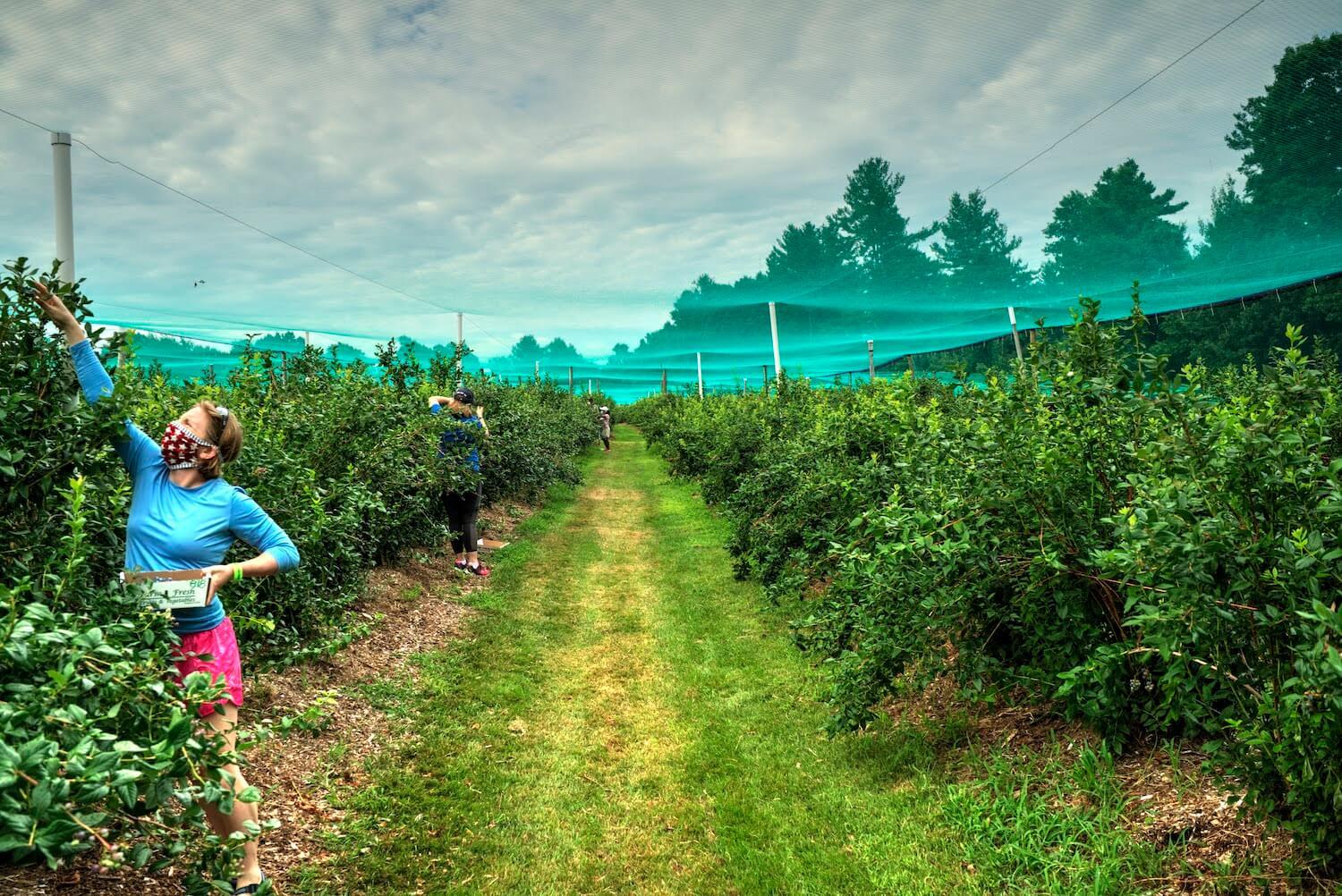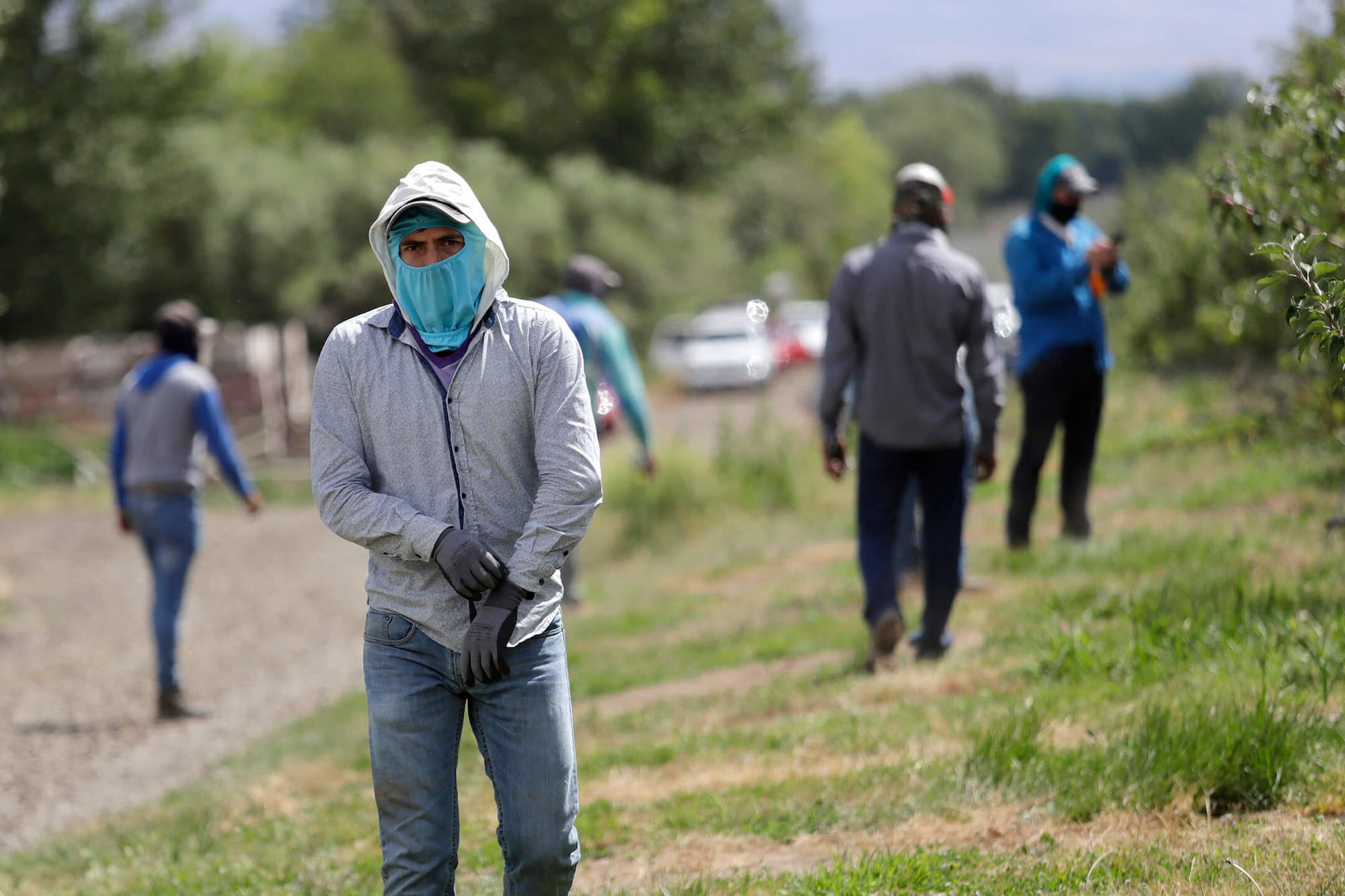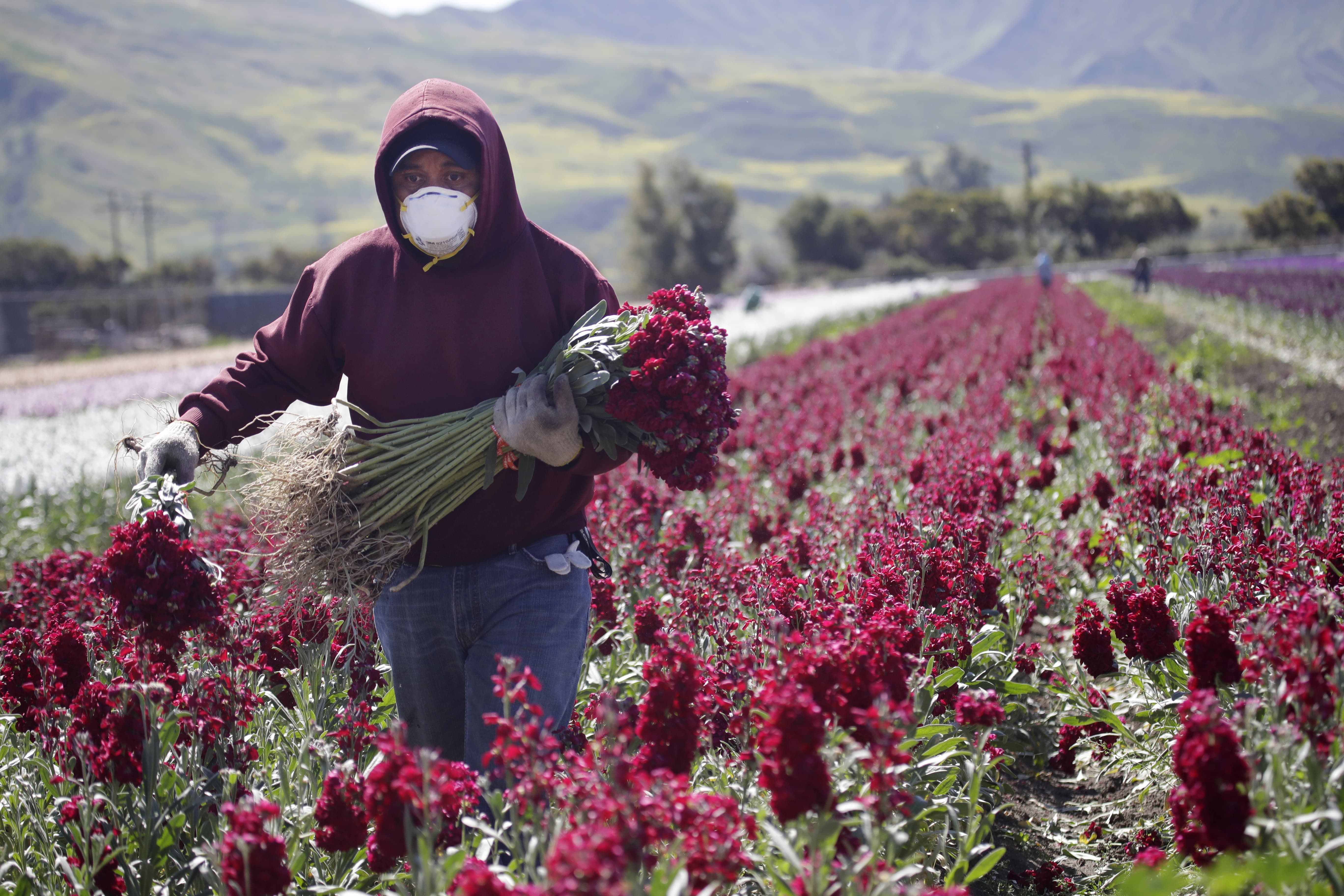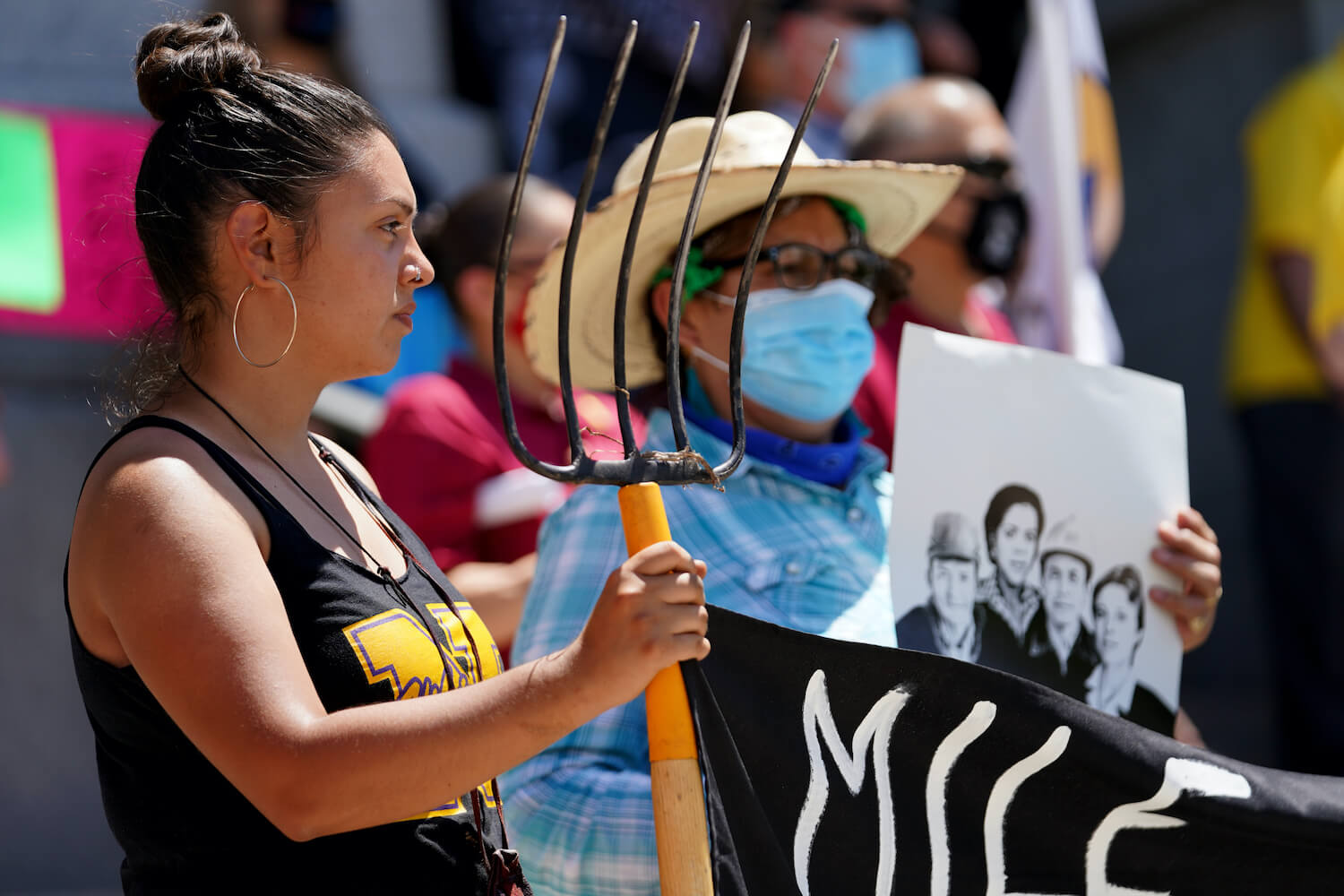Insta-worthy apple picking obscures the realities faced by migrant farmworkers.
When the leaves start to change, autumn-obsessed influencers go on their usual rampage, posting photos of themselves on bales of hay, in pumpkin patches, and holding cozy warm beverages. Apple picking has also become “an essential, Instagram-friendly element of America’s ever-expanding autumn industrial complex,” writes Dan Greene for Vox. In fact, apple picking has become so significant to American farms that they now rely on this agritourism—and it’s big business; from 2012 to 2017, the industry grew 35 percent to nearly $950 million a year. But this quaint fall pastime obscures the realities faced by the mostly migrant workers who pick the approximately 30 billion apples grown annually in the United States. A majority of the nation’s professional apple pickers are migrant workers who enter the country through H-2A visa programs, which some advocacy organizations have likened to a modern form of slavery. In Washington state, the nation’s leader in apple production, the use of H-2A workers increased by nearly 1,700 percent between 2006 and 2016. Unlike the leisurely shots we see on our social media feeds, the pace for actual apple pickers is grueling, with one worker responsible for picking thousands of pounds of apples each day. These workers are also prone to pesticide exposure and developing spinal and musculoskeletal injuries. By all means, enjoy the great outdoors as the pandemic rages on, but perhaps take a moment to consider the realities of this fall favorite.




